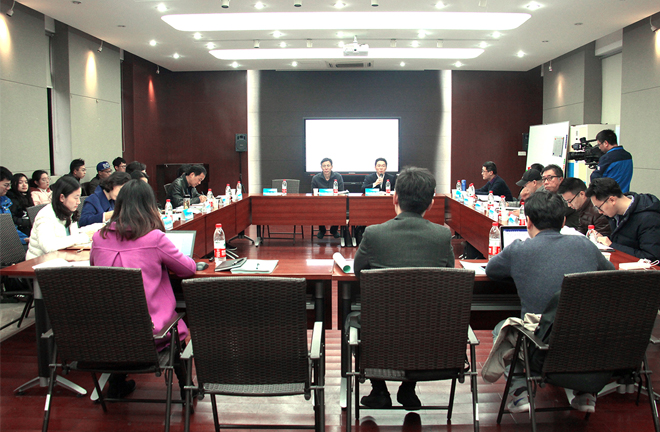Constructive journalism seeks not just to report but solve problems

Scholars discuss how to develop journalism at seminar on constructive news. Photo: NIT
In recent years, constructive journalism, as an alternative to traditional journalism, has gained a great deal of attention in academic discussions.
Constructive news is the product of philosophical and practical innovation in news reporting. Constructive journalism is based on public life with a focus on solving social problems. While adhering to the core functions of journalism, it is committed to seeking solutions to produce reports with profound results.
Constructive journalism is a concept developed by some press practitioners in Europe to improve journalism. Ulrik Haagerup, a former executive director of the Danish television channel News, is believed to be the first to promote “Constructive journalism.” In 2017, he quit his job and wrote Constructive News, and later he founded the Constructive Institute to promote constructive journalism project.
The idea of constructive journalism has received resonance among journalism professors and public broadcasting companies in Europe, according to Laura Ahva and Mikko Hautakangas, two media researchers from University of Tampere. The course “going constructive” has been added at more schools and universities teaching journalism.Windesheim University of Applied Sciences in the Netherlands has even a chair for a Professor of Constructive Journalism.
In the United States, similar concept circulates in the name of solutions journalism. Solution stories in fact had been published in the United States for many years. The New York Times’ Fixes column and the Washington Post’s The Optimist are both practicing solutions journalism.
However, solutions journalism or constructive journalism is not welcomed by all news people. It was met with some suspicion from some journalists, who tend to conflate good news or positive news with solutions journalism.
“The solution is not to produce more positive news but to create more knowledge, to truly understand how the world works, what forces are at work in terms of trying to address problems,” David Bornstein, co-founder of the Solutions Journalism Network and co-author of the New York Times Fixes column had ever said to the Columbia Journalism Review, “It’s not more awareness about problems, or even outrage, but: What can we do about it? What should grow? Where should investments go? Those are serious questions people are asking every day.”
In the Chinese context, scholars expressed expectations for constructive journalism to play an important role in presenting a more comprehensive world and solving social problems.
Yan Qing, an associate professor at the School of Journalism and Communication at Jinan University, said that traditional journalism tends to report negative news, especially in market-oriented appeals. Therefore, constructive news helps to provide more comprehensive information, narrowing the gap between the positive reports and negative reports.
Luan Yimei, a professor at the School of Journalism and Communication at Renmin University of China, said that constructive news should aim to facilitate public discussion. It doesn’t mean that constructive news cannot supervise and criticize. Rather, the goal of constructive journalism is to “report facts, convey goodwill, facilitate public discussion, and promote social synergy.” In this way, various opinions can be expressed, and a pattern of mutual debate between different opinions can be formed, which enables people to participate in the whole process of public policy formulation and implementation.
Yan added that constructive news could transform the framework dominated by negative and conflicted reports into a more balanced framework containing both negative reports and constructive solutions; and constructive news reporters are not only the recorders and bystanders of an event, but also the supporters and proposers of specific solutions. In addition, reports should incorporate both conflicts and the strategies to solve them in order to promote dialogue.
edited by YANG LANLAN
